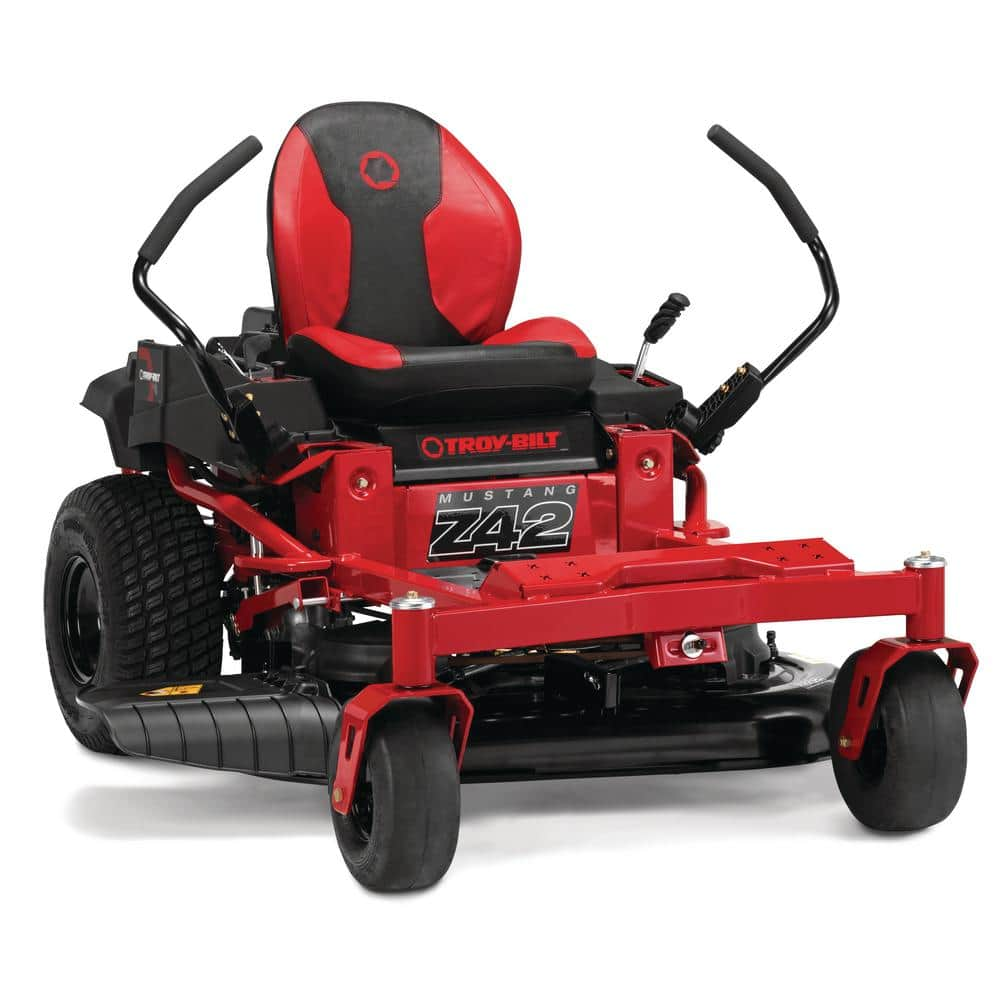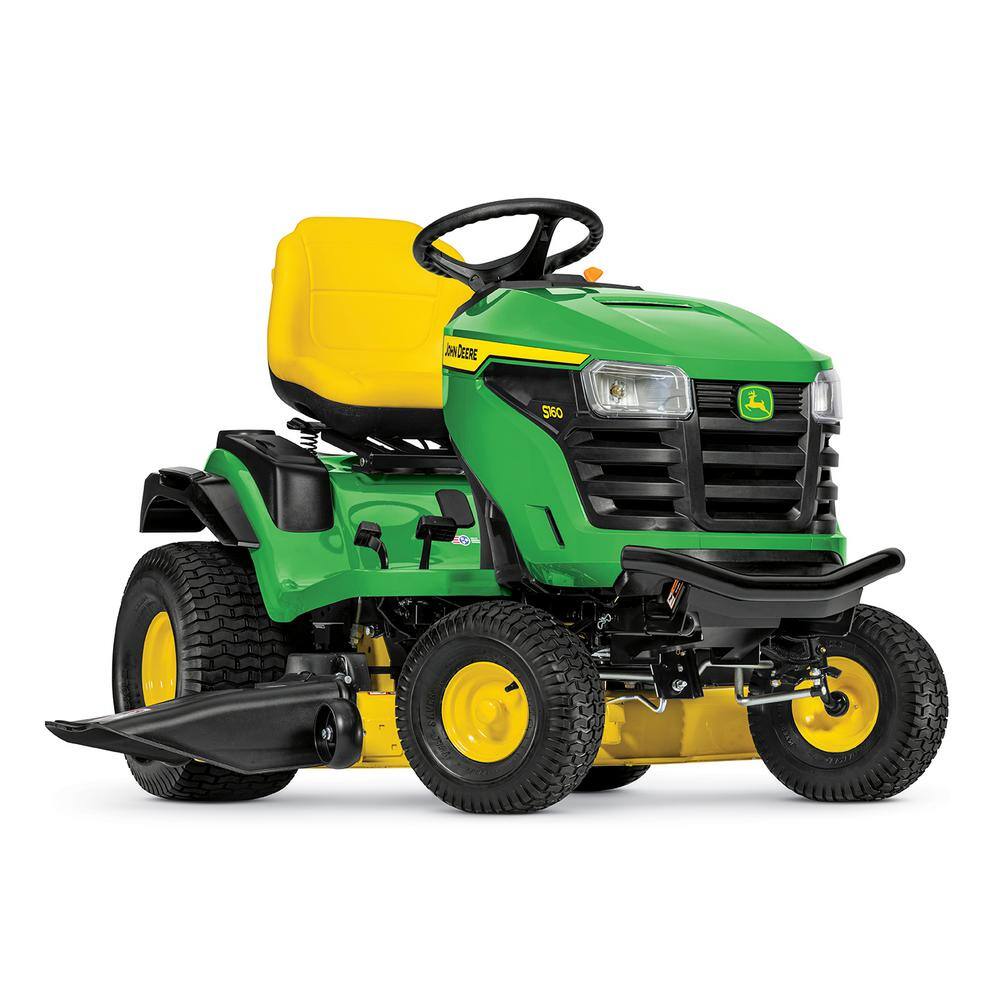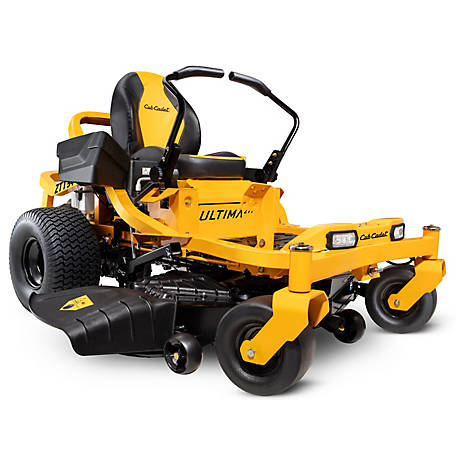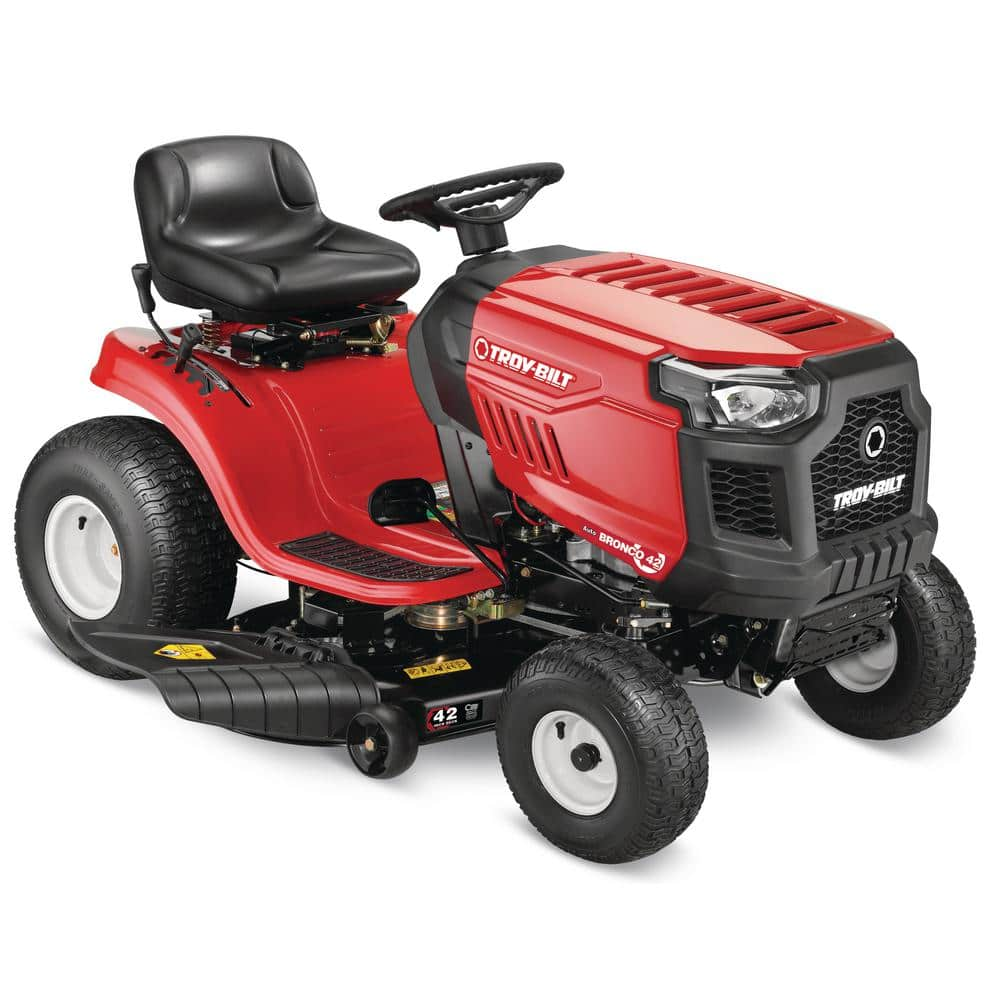Troy-Bilt Mustang 42 in. 679 cc V-Twin OHV Engine Dual Hydrostatic Drive Gas Zero Turn Riding Lawn Mower
Powerful 679cc twin-cylinder OHV Troy-Bilt engine. Fully welded solid steel frame adds durability over rough terrain. Dual hydrostatic transmission for true zero turn performance.
The Mustang Z42 is ideal for larger, flat to slightly hilly yards and is designed to reduce mowing time with dual hydrostatic transmission and true zero-turn capability. Featuring a heavy-duty, full length, fully welded, tubular frame, it’s built for added strength and durability in the yard. The 679 cc Troy-Bilt twin cylinder engine provides plenty of power to mow larger lots for extended periods of time. Maintain control with the professional-style lap bar controls and engage the blades with push-button electric PTO blade engagement. Deck clean up is easier with the integrated deck wash adapter. Simply attach a garden hose and rinse clippings away. A limited lifetime warranty on the frame and 3-year limited warranty on the rest of the rider provide added peace of mind.
- 679 cc V-twin OHV Troy-Bilt engine features full pressure lubrication to ensure smooth delivery of oil to critical components and a forged steel crankshaft making it stronger and more durable
- Built with global parts since 1937
- Heavy-duty, full length, fully welded, 2 in. tubular frame is designed to absorb impact, provide maximum stability and covered by a limited lifetime warranty
- Dual hydrostatic transmission delivers true zero turn performance for quicker mow times and improved maneuverability
- Ride in more comfort and reduced vibration with the high-back seat and foam grip steering controls
- Large 3.5 Gal. fuel tank means less stopping for fill-ups when mowing for extended periods of time
- Electric PTO quickly and easily engages cutting blades
- Lap bar controls have an integrated parking brake to safely and quickly stop the mower
- Attach a standard garden hose to the integrated deck wash port on the cutting deck to quickly rinse grass clippings from the underside of deck
- Add versatility to your riding mower with optional attachments like a rear bagger or mulch kit (sold separately)
- Use fuel stabilizers to maintain your engine and increase the longevity of your mower (not included)
- Limited lifetime warranty on the frame and a 3-year limited warranty on the remaining components offers peace of mind
- Troy-Bilt Mustang Z42 comes fully crated and requires some assembly upon arrival
- Comes fully crated and requires some assembly upon arrival
Additional information
| Assembled Depth x Height x Width (in.) | 84 x 35 x 48 |
|---|---|
| Cutting Width | 42 inches |
| Front Wheel Size (in.) | 11 |
| Mower Deck Width | 42 in |
| Rear Wheel Size (in.) | 20 |
| Turning Radius (in.) | 0 |
| Certifications and Listings | No Certifications or Listings |
| Manufacturer Warranty | 2-Year Limited Warranty |






by Jerome
This is by far the best mower I’ve ever had .Bought mine in 2008 yes in 2008 I’ve never had a problem with this mower.The only maintaince Ive ever done to it is change the oil spark plug and tires .The tires I only changed this year.I bought mine from the Troy built dealer which cost a bit more but If I’m to ever recommend a product it is the Troy built Zmaster 42in cut with the Koler 19 hp motor.
by Louis
Looks good and runs. I don’t have much use for it this time of year.
by Joanne
Was easy to assemble.
by Richard
Lots of power and a force to be reckoned with. Reduces time cutting the Yard. Definitely recommend.